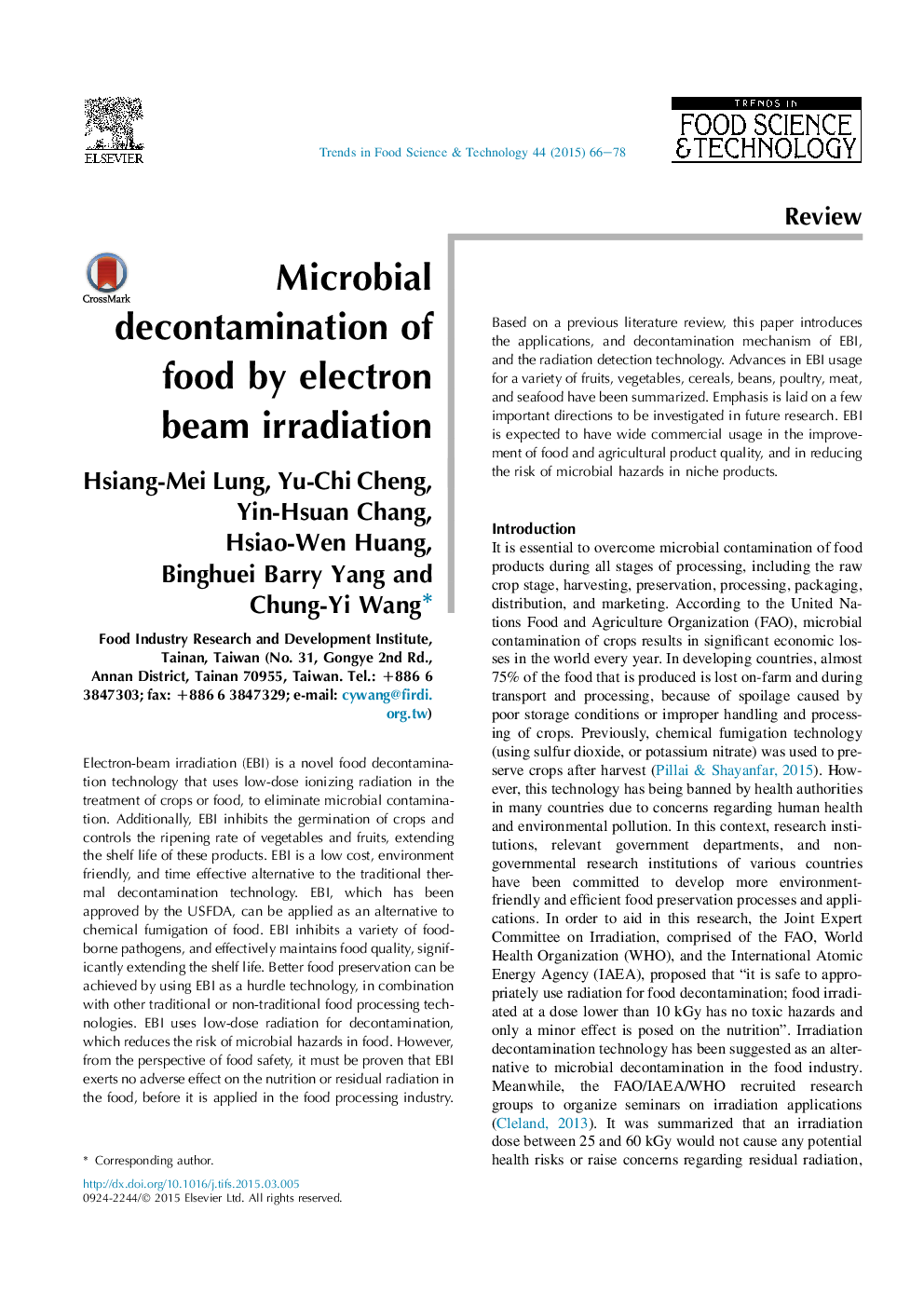| Article ID | Journal | Published Year | Pages | File Type |
|---|---|---|---|---|
| 2099757 | Trends in Food Science & Technology | 2015 | 13 Pages |
•Overview of the developments in the use of EBI for food decontamination.•EBI is a low cost, environment friendly, and time effective e alternative to the traditional thermal decontamination technology.•EBI is expected to improvement of food and agricultural product quality, and in reducing the risk of microbial hazards in niche products.
Electron-beam irradiation (EBI) is a novel food decontamination technology that uses low-dose ionizing radiation in the treatment of crops or food, to eliminate microbial contamination. Additionally, EBI inhibits the germination of crops and controls the ripening rate of vegetables and fruits, extending the shelf life of these products. EBI is a low cost, environment friendly, and time effective alternative to the traditional thermal decontamination technology. EBI, which has been approved by the USFDA, can be applied as an alternative to chemical fumigation of food. EBI inhibits a variety of foodborne pathogens, and effectively maintains food quality, significantly extending the shelf life. Better food preservation can be achieved by using EBI as a hurdle technology, in combination with other traditional or non-traditional food processing technologies. EBI uses low-dose radiation for decontamination, which reduces the risk of microbial hazards in food. However, from the perspective of food safety, it must be proven that EBI exerts no adverse effect on the nutrition or residual radiation in the food, before it is applied in the food processing industry. Based on a previous literature review, this paper introduces the applications, and decontamination mechanism of EBI, and the radiation detection technology. Advances in EBI usage for a variety of fruits, vegetables, cereals, beans, poultry, meat, and seafood have been summarized. Emphasis is laid on a few important directions to be investigated in future research. EBI is expected to have wide commercial usage in the improvement of food and agricultural product quality, and in reducing the risk of microbial hazards in niche products.
